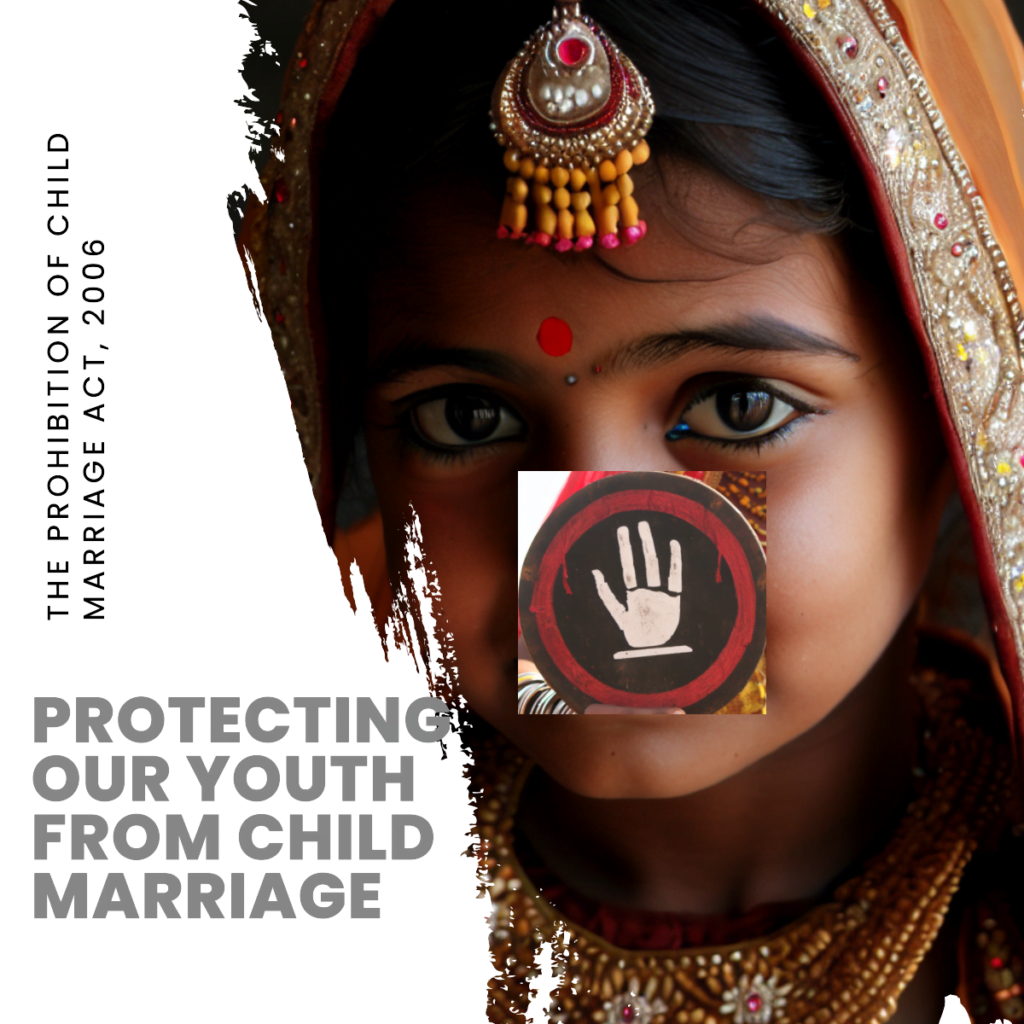
Safeguarding Our Youth’s Future
Prohibition of Child Marriage Act, 2006:
Child marriage is a deeply entrenched social issue in many parts of the world, including India. Recognizing the urgent need to address this problem and protect the rights of young individuals, the Indian government enacted the Prohibition of Child Marriage Act in 2006. This pivotal legislation seeks to eradicate child marriage by defining and penalizing it, while also providing support to those affected. In this post, we will delve into the key provisions of the Act, its significance, and the progress made in combating this practice.
Understanding Child Marriage:
Child marriage, which refers to the marriage of a girl below the age of 18 or a boy under 21, is a practice that often leads to severe physical, emotional, and psychological consequences for the young individuals involved. Consequently, child brides are more likely to face health issues, experience domestic violence, and have limited access to education and economic opportunities. Recognizing these harmful effects. The Indian government took a significant and commendable step towards its eradication with the enactment of the Prohibition of Child Marriage Act in 2006.
Key Provisions of The Prohibition of Child Marriage Act, 2006:
The Act provides a clear legal framework. Further underscoring its intent by defining child marriage as any marriage involving a girl under 18 years or a boy under 21 years.
Offenses and Penalties: Within the legal framework. It prescribes stringent penalties for those individuals involved in the solemnization or promotion of child marriages. Which encompass imprisonment and substantial fines.
Voidable Marriages: Furthermore. The Act provides the option to annul a child marriage at the request of the minor party involved.
Authorities diligently appoint Child Marriage Prohibition Officers with the explicit aim of proactively preventing, closely monitoring, and promptly reporting any instances of child marriages.
Right to Maintenance: The Act ensures that a child bride is entitled to maintenance until she reaches a legal age.
Significance and Impact of The Prohibition of Child Marriage Act, 2006:
Act has played a crucial role in raising awareness about the harmful consequences of child marriage. It has empowered young individuals to assert their rights and seek protection against early and forced marriages. The Act also encourages community involvement and reporting of child marriage incidents, fostering a more vigilant society. Despite the progress made, challenges persist, and continued efforts are needed to ensure its effective implementation.
Progress and Challenges:
While the Prohibition of Child Marriage Act, 2006 represents a significant step forward, challenges remain in eliminating child marriage entirely. Cultural and social factors often perpetuate this practice, making enforcement difficult. Additionally, limited access to education and economic opportunities in certain regions can contribute to the persistence of child marriage. However, ongoing awareness campaigns, support networks, and the work of Child Marriage Prohibition Officers are gradually making a positive impact.
Conclusion :
The Prohibition of Child Marriage Act, 2006, stands as a beacon of hope in the fight against child marriage. By defining, penalizing, and providing remedies for child marriages. This legislation has paved the way for a brighter future for India’s youth. Therefore, it is crucial for all stakeholders, including government agencies, civil society, and individuals, to collaborate and work tirelessly to ensure the Act’s effective implementation, and ultimately eliminate child marriage from our society.



Leave a Reply